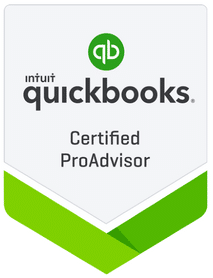- Patrick Roney
- (877) 503-8607
Follow Us :
Follow Us :
Proledge
March 16, 2012

There is no doubt that large banks have recently done everything they could to scare clients away. However, when it comes to small businesses, large banks still offer assets that make it harder for smaller banks to compete. No, it’s not just about the number of branches. There are also very significant differences in terms of online banking capabilities which can materially impact your day-to-day operations.
It is a well-accepted fact that the main advantage of small banks is their level of customer service. The difference is not just on the margin. It is staggering. You can develop personal contacts with your banker at a small bank that you will never be able to match in a large bank. You’ll be lucky to have the same contact in a large bank for 12 month in a row. That personal touch becomes very handy when it comes to getting a loan. Very often, in a small bank, you’ll be able to talk directly to the decision maker, whereas, in a large bank, the decision is made several layers of management away from you.
However, if you are willing to accept the impersonal nature of the large bank, these monster institutions offer very significant advantages.
The advantage most commonly discussed is the number of branches, of course. For an expanding small business, it might give you greater chances of having branches closer to your multiple offices. If your business is heavy on cash, the closer the branch, the safer it is for your employees to go make deposits. If your business needs to relocate, the odds are that you won’t have to change bank. The list of benefits of multiple branches goes on and on.
However, in my view, the single greatest advantage of large banks from the perspective of the small business owner is online banking. “Online banking” is not just about the bank’s website. It includes all the other electronic interactions that you have with the bank: downloading transactions into QuickBooks, online bill payment, check deposits through a scanner, etc… If you think of the number of times you touch your bank electronically vs walking into a branch, it’s pretty clear that an efficient and flexible online banking experience is becoming an increasingly important parameter to consider when selecting a bank.
Unfortunately, most small banks can’t compete on online banking. The investments required to develop and integrate an efficient online banking system are enormous and only the large banks such as Chase, Wells Fargo and Bank of America can afford these R&D costs in-house. As a result, smaller banks turn to 3rd party providers who can supply them with turnkey solutions for online banking and white label them. In general, these turn-key systems are not as feature rich and the integration with the bank’s back-end is not as seamless.
Here are some example of online banking features that you are guaranteed to find in a large bank and that many small banks might be lacking:
If you can find a small bank that offers these services, you’ve got the best of both worlds, but make sure not to discount online banking in your evaluation process.


Fill out the form below to sign up to our Blog Newsletter and we’ll drop you a line when new articles come up.
Bookkeepers.
Professional. Affordable.
ProLedge is a bookkeeping services firm.
Copyright © 2024 All rights reserved.
Hello. Can we help you?